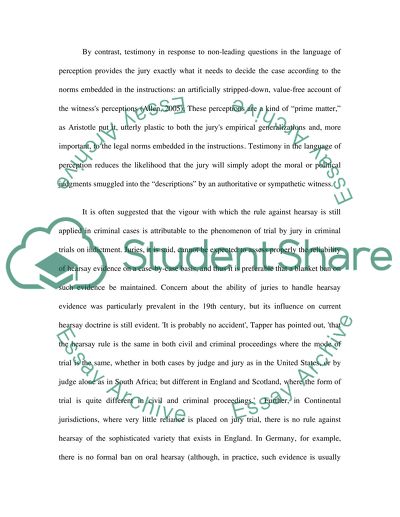Cite this document
(“The Law of Evidence Essay Example | Topics and Well Written Essays - 3000 words”, n.d.)
The Law of Evidence Essay Example | Topics and Well Written Essays - 3000 words. Retrieved from https://studentshare.org/law/1529811-the-law-of-evidence
The Law of Evidence Essay Example | Topics and Well Written Essays - 3000 words. Retrieved from https://studentshare.org/law/1529811-the-law-of-evidence
(The Law of Evidence Essay Example | Topics and Well Written Essays - 3000 Words)
The Law of Evidence Essay Example | Topics and Well Written Essays - 3000 Words. https://studentshare.org/law/1529811-the-law-of-evidence.
The Law of Evidence Essay Example | Topics and Well Written Essays - 3000 Words. https://studentshare.org/law/1529811-the-law-of-evidence.
“The Law of Evidence Essay Example | Topics and Well Written Essays - 3000 Words”, n.d. https://studentshare.org/law/1529811-the-law-of-evidence.


